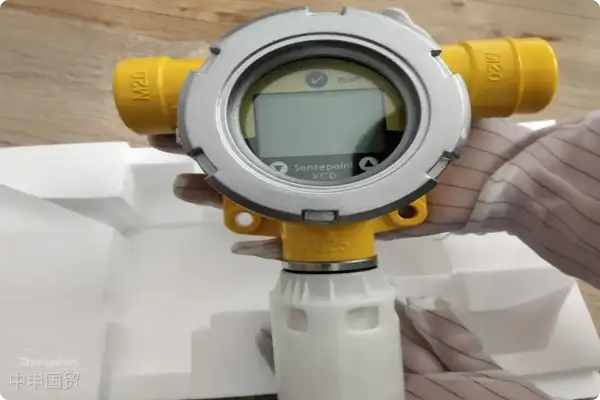- Shanghai Zhongshen International Trade Co., Ltd. - Two decades of trade agency expertise.
- Service Hotline: 139 1787 2118
When "Safety Guardian" Meets Import Trade: The Ins and Outs of Importing Combustible Gas Detectors
Hello everyone, I am a 20-yearimport and exportindustry veteranforeign tradeToday, I'm going to talk to you about a product that is both professional and crucial for life safety—the complete import process for combustible gas detectors. It's like hiring a "gas security guard" on 24-hour duty for your home, and the import process must not be taken lightly.

I. Pre-import "Medical Examination Report": HS Code and Regulatory Conditions
First, we need to issue an "ID card" for this "security guard":
- HS code query: Usually classified into 8531.80.00 (electrical alarm devices), with an import tariff of 5% and a value - added tax of 13%.
- Regulatory certificates: RequiresImport license(involving safety certification) andIt is recommended to verify through the following methods:
- Special Requirements: Commodities subject to legal inspection must pass the CIQ inspection. It is recommended to reservean additional 7 working daysfor customs clearance time.
II. "Security Password" in the Packing List: Key Points of Document Preparation
Remember that last year, when helping a client import a batch of German detectors, the goods were detained and inspected by the customs due to incomplete information on the certificate of origin. Therefore, these documents need to be checked as carefully as the detectors check for gas:
- Essential documents: The three-piece set of contract/invoice/packing list (be sure to indicate: The type of gas to be detectedTrade dispute settlement mechanisms
- - Complete: CE certification, explosion-proof certification, etc. (requirements vary in different countries)
- Special documents: Filing of Chinese instruction manuals, declaration of product service life
III. The "Safe Journey" Across the Seas: Precautions for International Shipping
The transportation phase is most prone to "false alarms":
- Packaging Requirements: Shockproof and moisture-proof packaging to avoid damage to the sensor during transportation
- Temperature-controlled transportation: Some precision components need to be transported at a constant temperature (additional cost is approximately +15%)
- Insurance recommendation:: It is recommended to take out insuranceAll Risks, last year, a batch of goodsMaritime Transportationwas completely damaged due to moisture
IV. Customs Uncle's "Safety Test": Practical Experience in Customs Clearance
During customs clearance, the authorities primarily focus on these three "probes":
- Commodity classification:A client once mistakenly reported it as "household appliances" and was subsequently required to pay the tax difference.
- Quality verification: Need to provideThird - party test report(especially the data of alarm action values)
- Label inspection: It must be marked in ChineseProduction date, applicable gas type
V. Customs Consumption Advisory's "Safety Alert": Avoid These Minefields
Combined with the customs tips, I have summarized 6 details that importers are most likely to overlook:
- Model correspondence: Natural gas type/Liquefied petroleum gas type should not be used interchangeably (last year, a client had the entire batch returned due to this)
- Self-check function: The instruction manual must clearly mark the self-check method (a key inspection item by the customs)
- Service life: Like food with an "expiration date," imported products nearing their expiry may be detained.
- Products without a brand, factory name, or address: Goods without a factory name and address will be directly destroyed (I have witnessed the customs destroying goods worth $200,000)
- Installation Instructions: Should includeSchematic Diagram of Orientation(such as within 30cm from the gas source)
- Alarm Handling: The instruction manual must include the emergency handling procedures
VI. "Safety Manual" for Import Beginners: Special Considerations
Finally, share three lessons learned through blood and tears:
- Differences in Testing Standards: There is an error of ±15% between European and American standards and national standards. It is recommended to conductAdaptability Testing in advance
- Patent Traps: A certain brand of detector has a patent in China. Authorization is required for parallel imports
- Exclusive for E - commerce: Some "e-commerce exclusive editions" lack key sensors and cannot pass commercial inspection.
Please remember that when importing safety equipment, the first priority is to ensure the security of the trade process itself. If you have any questions, feel free to communicate with us at any time. Let's work together to safeguard this "safety" endeavor!
Related Recommendations
? 2025. All Rights Reserved. Shanghai ICP No. 2023007705-2  PSB Record: Shanghai No.31011502009912
PSB Record: Shanghai No.31011502009912










